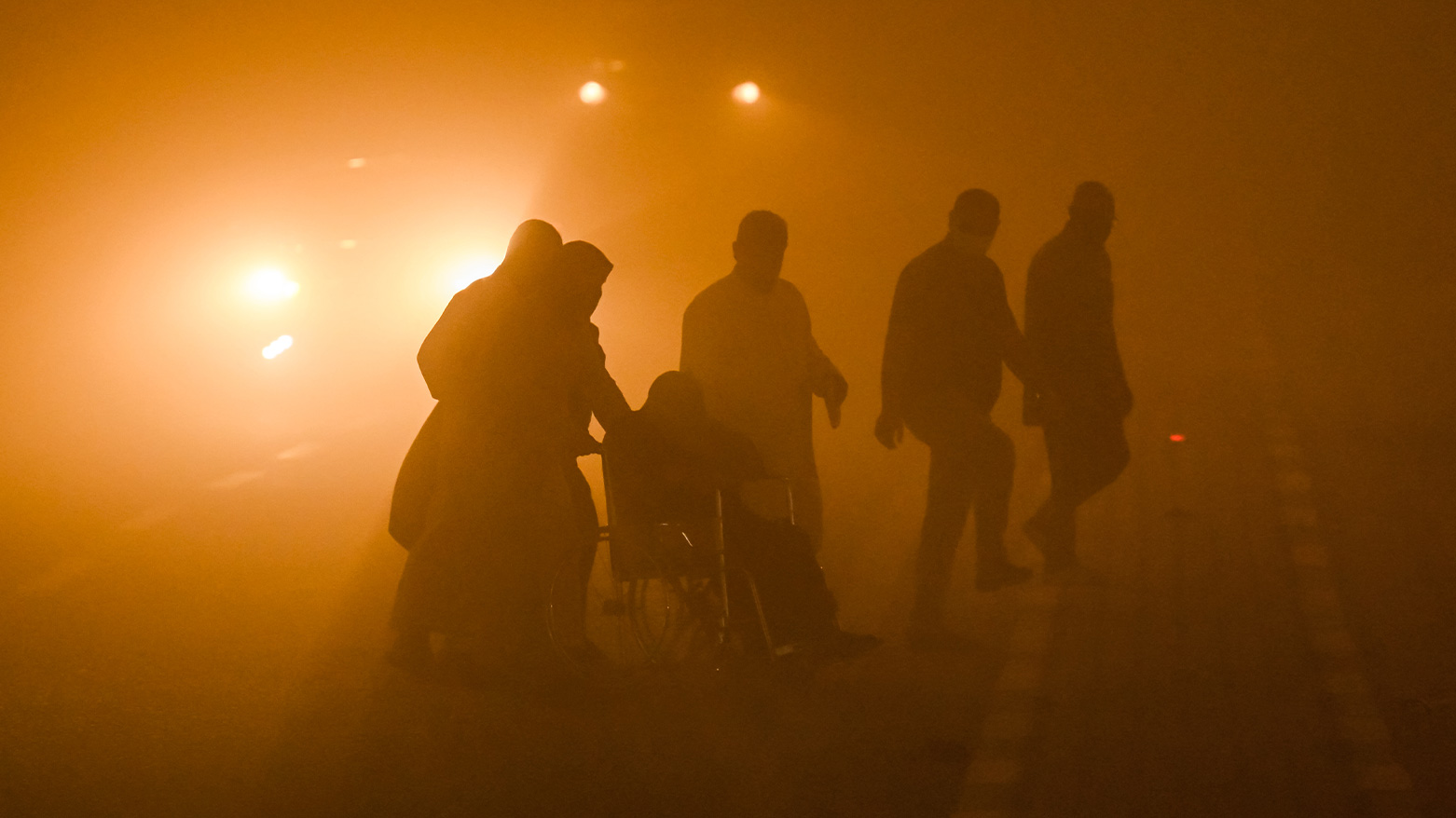Dust Storms Choke Southern Iraq: Thousands Hospitalized Amid Worsening Air Crisis
According to a medical source in Missan province, 2,750 people have been affected by the dust storms in recent days, with the majority of health complications reported across the southern provinces.

By Kamaran Aziz
ERBIL (Kurdistan24) — A new wave of severe dust storms sweeping across Iraq has plunged parts of the country into crisis, sending thousands to hospitals with respiratory complications, grounding flights, and triggering power outages across the southern provinces. The health emergency, the most serious of the year so far, has reignited calls for national action to combat Iraq's growing environmental vulnerabilities.
According to a medical source in Missan province, 2,750 people have been affected by the dust storms in recent days, with the majority of health complications reported across the southern provinces.
In Missan alone, 656 patients suffering from dust-related illnesses have been treated in 12 hospitals and emergency care facilities. Basra topped the list with 749 reported cases, followed closely by Muthanna with 700. Additional provinces recorded significant impacts, with 322 cases in Diwaniyah, 174 in Dhi Qar, and 150 in Najaf, according to health directorate data.
The influx of patients has overwhelmed local healthcare centers, particularly in rural and under-resourced areas.
In Najaf, a preliminary report by the health directorate noted a dramatic surge in respiratory cases: Al-Hakeem Hospital received 88 patients, Al-Mishkhab 40, Al-Manathira 60, Al-Sadr 50, Al-Furat 17, and Najaf Educational (German) Hospital 30. Governor Yusuf Ghanawi declared a full alert across healthcare facilities, ensuring the availability of oxygen supplies and deploying civil defense teams to handle emergencies.
The footage below shows the weather conditions in Najaf:
A similar state of emergency was declared by Governor Murtadha Al-Ibrahimi in Dhi Qar, where hospitals are managing a sharp rise in suffocation cases.
The powerful dust storm swept through Diwaniyah Province in southern Iraq, blanketing the area in a dense cloud of sand and dust. The video shows dramatically reduced visibility, with the sky turned a deep, murky orange—a characteristic sign of a high-intensity haboob. Strong winds can be seen whipping up loose particles, creating a choking atmosphere that poses serious health risks, particularly for those with respiratory conditions.
The intensity of the storm suggests that local authorities may issue warnings or suspend outdoor activities, flights, or even traffic in certain areas. Such dust storms are becoming increasingly frequent in Iraq due to prolonged drought, land degradation, and shifting wind patterns linked to climate change and desertification.
Severe Dust Storm Chokes Diwaniyah Province
— Kurdistan 24 English (@K24English) April 15, 2025
On Monday, a powerful dust storm engulfed Diwaniyah Province in southern Iraq, turning the sky into a deep, eerie orange and reducing visibility to near zero.
📹 Watch the dramatic footage as strong winds whip up thick clouds of sand… pic.twitter.com/9EIC08Hv78
Satellite imagery from the General Authority for Meteorology and Seismic Monitoring confirmed that powerful westerly winds generated the massive dust cloud, which reduced visibility to less than one kilometer in some areas and turned the sky a deep orange. The dust wave is expected to linger through the evening, gradually dissipating by Tuesday morning.
The impact extended well beyond healthcare. Flights at Basra and Najaf international airports were temporarily suspended due to near-zero visibility, with incoming planes from Saudi Arabia redirected to Baghdad. Basra also experienced power outages in several districts after parts of the grid failed.
The director of the Electricity Distribution Branch in Dhi Qar, Abdul-Majid Alaa Majid, said emergency technical crews were deployed to restore electricity and stabilize the network amid ongoing disruptions.
Traffic authorities issued an urgent public warning for drivers, advising reduced speeds, use of hazard lights, and complete halts in case of total whiteout conditions. At least five traffic accidents were recorded in Najaf alone.
Meteorological Authority spokesman Amer Jabri urged citizens to remain indoors and take precautions, particularly those with chronic respiratory conditions, the elderly, and children. He described the current storm as one of increasing frequency and intensity, linked to climate change and environmental degradation.
Health experts advised residents to wear face masks and avoid outdoor activity, stressing the growing health burden from recurrent dust storms. Iraq, identified by the United Nations as one of the five countries most affected by climate change, has experienced an uptick in "dust days" due to rising desertification, water scarcity, and mismanagement of land resources.
In a haunting reminder of the country’s worsening environmental trajectory, Shafaq News captured dramatic footage of the dust cloud enveloping the shrine of Imam Ali in Najaf, one of Iraq's most revered religious landmarks.
In 2022, more than 5,000 Iraqis were treated for respiratory issues during a similar storm, and at least one person died. Environmental officials warn that such scenes could become a norm unless immediate and coordinated national and international action is taken to bolster Iraq’s climate resilience.
As Iraq continues to navigate these converging crises, local authorities are appealing for more support from the federal government and international partners to strengthen healthcare capacity and invest in long-term environmental mitigation. The latest storm has exposed the country’s fragile infrastructure and the urgent need for a comprehensive strategy to protect Iraq’s most vulnerable communities from the growing fallout of climate change.
